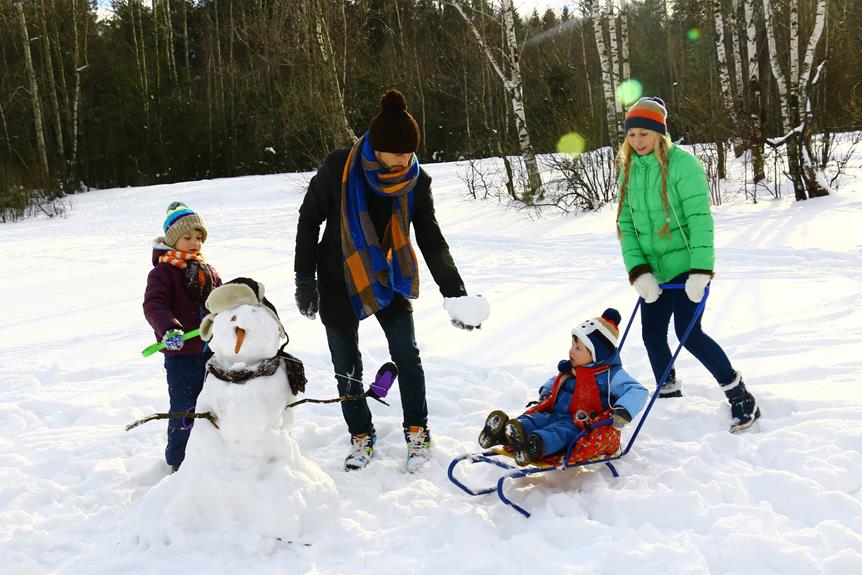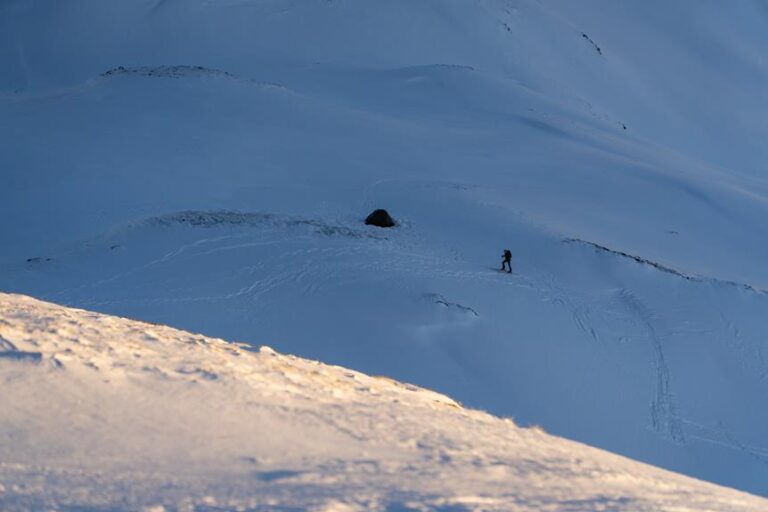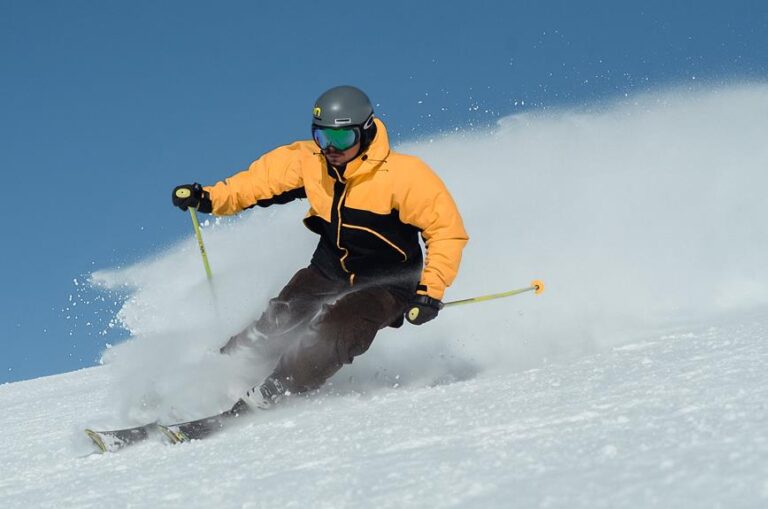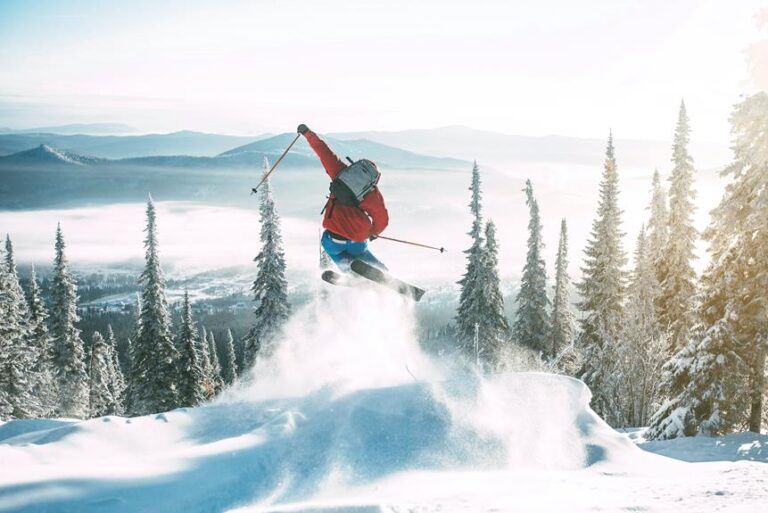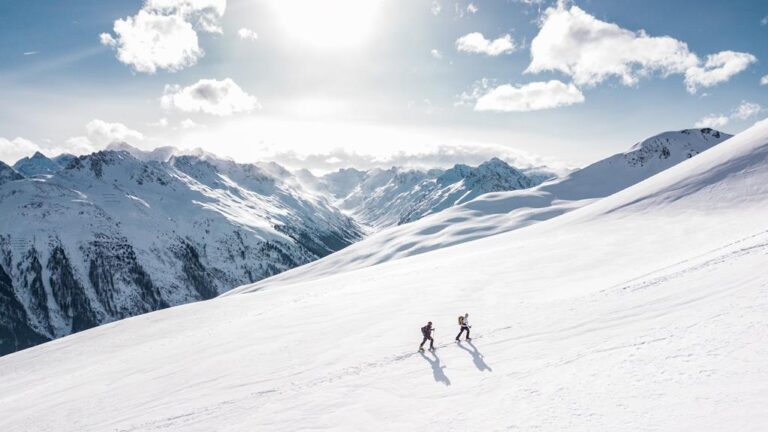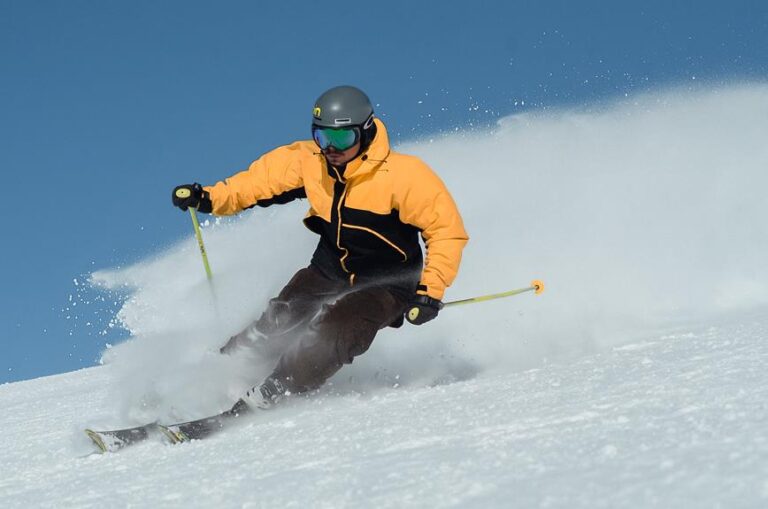Is Skiing Like Ice Skating – Expert’s Choice!
They say 'practice makes perfect,' but does that saying hold true when it comes to skiing and ice skating?
The question of whether skiing is like ice skating is one that has intrigued many enthusiasts of both sports. As you ponder this comparison, you may find yourself considering the techniques and movements involved, the equipment and gear required, the similarities in balance and stability, the differences in terrain and surface, and ultimately, the overall experience and skill development.
So, let's delve into the world of skiing and ice skating to see just how closely they are intertwined.
Techniques and Movements
To navigate through varying terrains effectively, you must utilize proper techniques and maintain a balanced and centered stance while skiing. Just like in ice skating, where balance and control are crucial, skiing requires similar skills and movements.
One important technique to master is parallel skiing, which involves sliding through the radius of the turn and maintaining energy by leaning into turns and rolling your knees. This technique allows for smoother and more controlled movements on the slopes.
Transitioning from basic skiing skills, such as snowplough stops, to more advanced techniques like the hockey stop is also essential. The hockey stop requires digging into the edges of the skis, similar to the technique used in ice skating. By understanding the importance of balance and the correct positioning of your body, you can execute this technique effectively.
To further improve your skiing skills, consider incorporating inline skating with poles and slightly downhill. This activity has been recommended to enhance balance, edge control, and rhythm in skiing.
Equipment and Gear
When gearing up for skiing, it is important to have the right equipment and gear to ensure a safe and enjoyable experience on the slopes. Just like with ice skating, skiing requires specific equipment tailored to the sport. Here's a breakdown of the essential gear you'll need:
| Equipment | Description | Importance |
|---|---|---|
| Skis | Long, narrow boards that allow you to glide on the snow | Vital |
| Ski boots | Sturdy boots that provide ankle support and connect to the skis | Crucial |
| Poles | Lightweight sticks with handles that aid in balance and propulsion | Essential |
| Helmet | Protective headgear to prevent head injuries | Mandatory |
| Goggles | Eyewear that shields your eyes from wind, snow, and glare | Necessary |
Having the right ski equipment is crucial for both safety and performance on the slopes. Skis allow you to navigate the snow and control your movements, much like ice skates do on the ice. Ski boots provide stability and control, giving you the ability to transfer your weight and make precise turns, similar to figure skating. Poles aid in balance, help you push through the snow, and provide an additional level of control. Wearing a helmet is mandatory to protect your head from potential injuries. Finally, goggles shield your eyes from the elements, allowing you to see clearly and protect your vision. With the right equipment and gear, you'll be fully prepared for an exhilarating skiing experience.
Similarities in Balance and Stability
Gearing up with the right equipment and gear for skiing, such as skis, boots, and poles, isn't only essential for safety and performance on the slopes, but it also sets the foundation for the similarities in balance and stability shared between skiing and ice skating.
When it comes to balance and stability, figure skating and skiing go hand in hand. Both activities require you to have a strong sense of balance and stability to navigate the surfaces. Whether you're gliding across the ice or carving through the snow, controlling your body's center of gravity is crucial.
In both figure skating and skiing, you need to make constant adjustments for changes in terrain or ice conditions. Maintaining balance and stability is vital for executing maneuvers and turns in both sports. Engaging your core muscles and lower body is key to staying steady on the ice or the slopes.
Additionally, both figure skating and skiing rely on similar principles of weight distribution and edge control to maintain balance and stability. So, when it comes to finding your balance and staying stable, figure skating and skiing have more in common than you might think.
Differences in Terrain and Surface
Skiing and ice skating differ in terms of the terrain and surface on which they are practiced. When you go skiing, you'll find yourself on snow-covered slopes with varying terrains. On the other hand, ice skating is typically done on flat, icy surfaces like frozen lakes and rinks. To give you a clearer picture, let's compare and contrast the differences between skiing and ice skating in terms of terrain and surface in the table below:
| Skiing | Ice Skating | |
|---|---|---|
| 1. | Skiing takes place on snow-covered slopes. | Ice skating is done on flat, icy surfaces. |
| 2. | Skiers navigate through varying terrains, including groomed trails, backcountry areas, and terrain parks. | Ice skaters move on a relatively uniform and flat ice surface. |
| 3. | The skiing surface can range from powdery snow to packed snow or icy conditions. | Ice skaters enjoy a smooth and uniform ice surface. |
| 4. | Skiers may encounter obstacles like moguls, trees, or other skiers on the slopes. | Ice skaters have a clear and open surface for movement. |
| 5. | Skiing involves downhill, cross-country, and freestyle disciplines, each with its specific terrain requirements. | Ice skating focuses on graceful movements and figure skating techniques on a single, flat surface. |
As you can see, skiing and ice skating offer contrasting experiences when it comes to the terrain and surface. Whether you prefer the thrill of navigating through various terrains on skis or the elegance of gliding on a smooth ice surface, both activities have their unique appeal.
Overall Experience and Skill Development
Enhancing balance, muscle engagement, and movement in motion, both skiing and ice skating offer a comprehensive overall experience and contribute to skill development.
Engaging in ice skating can greatly improve your skiing skills, especially when it comes to balance and lower body strength. Both activities involve glute activation, back muscle engagement, and hip joint motion, which enhance your overall skill development.
Ice skating can serve as a beneficial off-season activity for skiers. It allows you to maintain your skills and prepare for the ski season. By engaging in ice skating, you can build confidence, find your legs, and improve your overall skill development before hitting the slopes.
The similarities between skating and skiing make them complementary activities. The balance and muscle engagement required in both sports transfer well between each other. Skating helps you develop the muscle memory and coordination needed for skiing. It also improves your ability to control your body movements while in motion.
In terms of skill development, both skating and skiing provide opportunities to refine your technique and enhance your overall performance. The continuous practice of these activities helps you develop a strong foundation of balance and muscle control, which are essential for mastering both sports.
Frequently Asked Questions
What Is Skiing and Skating?
Skiing and skating are both exhilarating activities. Skiing involves gliding down slopes on long, narrow skis, while skating involves gliding on ice or wheels. They offer different benefits, such as improving balance and technique, and require different techniques.
Does Knowing How Do You Roller Skate Help With Skiing?
Knowing how to roller skate can help with skiing. Roller skating techniques, such as balance and edge control, are similar to skiing. This familiarity can benefit your skiing skills, improving your overall performance on the slopes.
Is Learning How Do You Ice Skate Hard?
Learning how to ice skate can be challenging at first, but with practice and proper technique, it becomes easier. As a beginner, focus on balance, gliding, and turning. Take it step by step and don't forget to have fun!
How Do You Ski Ice?
To ski on ice, focus on your technique and use these tips: maintain a balanced stance, edge your skis to grip the ice, engage your core for stability, and use shorter turns for better control.
Conclusion
In conclusion, skiing and ice skating may share some similarities in terms of balance and muscle engagement, but they also have distinct differences.
Skating is generally considered harder and requires more muscle power, while skiing involves navigating varying terrains.
Each activity offers its own unique experience and opportunities for skill development.
So, while they may have some similarities, skiing and ice skating are ultimately separate and enjoyable activities in their own right.
